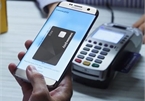 |
| All schools and hospitals in urban areas will go cashless in the next three months. |
The Government Office has released a document in which Dam ordered the Ministry of Education and Training, the Ministry of Health and the Ministry of Labour-Invalids and Social Affairs along with the municipal People’s Committees of 52 provinces and cities to step up efforts to digitise financial transactions in the education and health sectors.
They were told to offer guidance to schools of all levels and hospitals in urban areas to fully collaborate with banks and payment intermediary providers by December.
Schools and hospitals must publicise their bank accounts and install card readers, scanners for QR (Quick Response) codes and mobile applications to make payments more convenient. All preparations must be finished by this December.
The Deputy PM also asked banks and payment providers to consider a discount of service fees to cashless transactions in health, education and public service.
Vietnam was vigorously pushing for non-cash payment, making it a priority to improve the business environment and raise national competitiveness.
Reports by the Ministry of Planning and Investment show that total transactions via the banks’ e-payment system grew 23 percent in number and over 17 percent in value in the first five months of 2019 over the same period last year.
Mobile payment witnessed an impressive year-on-year surge of 97 percent and 232 percent in number and value in the reviewed period.

Cashless payments making steady inroads
Attempts to date to move the population away from their preference for cash need to be continually built upon.

Cashless payments record strong growth in Vietnam
The number of non-cash payments in Vietnam has steeply risen so far this year.

Cashless payment remains low in Vietnam: CIEM
The ratio of cashless payments in Vietnam remains low, standing at only 11.49 percent of total means of payment, according to a recent report from the Central Institute for Economic Management (CIEM).
VNS/VNA
 Deputy Prime Minister Vu Duc Dam has set the deadline for all schools and hospitals in urban areas go cashless in the next three months.
Deputy Prime Minister Vu Duc Dam has set the deadline for all schools and hospitals in urban areas go cashless in the next three months.